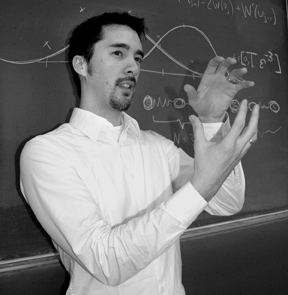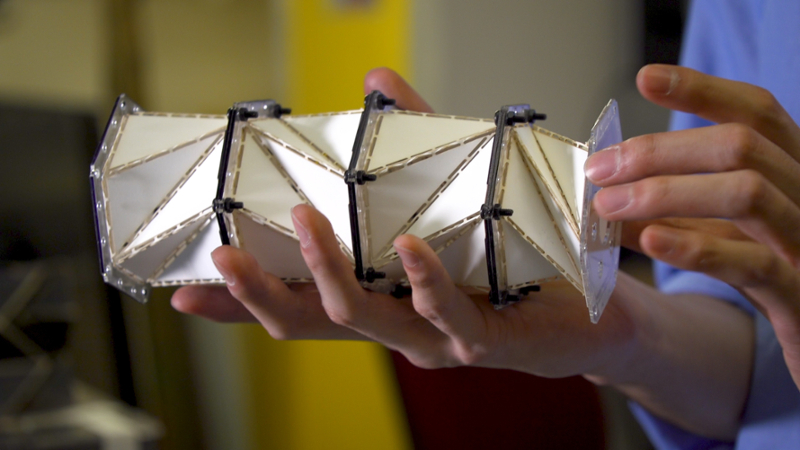How Paper Folding, Automobile Collisions, and Math Are all Connected
By Tom PorterThe ancient and delicate Japanese art of paper folding, or origami, may seem a long way from the hi-tech, highly automated world of twenty-first century automobile manufacturing. However, says Assistant Professor of Mathematics Christopher Chong, by applying the principles of origami to engineering processes, it may be possible to construct materials that would lessen the impact of a collision—something that would have huge industrial implications.

Scientists have discovered that materials constructed using the “folding creases” employed in origami have the ability to soften the blow of an impact. In mathematical terms, the harder an origami lattice is hit, the slower a wave will travel through it. As an applied mathematician, Chong wants to analyze the math behind this process of energy distribution. He recently received an award from the National Science Foundation (NSF) to help him develop his project, entitled "RUI: Dispersive Shock Waves in Nonlinear Lattices: Theory to Application." (RUI stands for Research in Undergraduate Institutions.) The overall aim is to try to understand how energy spreads if material is impacted intensely, such as in an auto accident, says Chong. “The goal is to minimize the energy that would be transferred to the driver or passenger.”
Researchers hope to be able to design structures made from a composite material that could absorb the impact of a crash, although the plan is still in its very early stages. Since 2011, Chong has been working alongside researchers from the University of Washington and elsewhere. “The work we are doing is with paper origami, but it is the geometry and not the material that gives us the desired properties. For the automobile application, the material would be different, of course, but the ‘folding’ pattern would be like origami.” Potential applications go beyond automobiles, he explains, and could play a crucial role in the deployment and landing of spacecraft, for example.

Mathematicians do not yet have a complete mathematical understanding of how lattices, like origami ones, respond to sudden changes in state, like in an automobile accident. This is where Chong’s project comes in. He aims to explore the mathematical equations underscoring the origami phenomenon. “The equations behind this process tend to be very complicated, but if I can develop some mathematical tools to help us understand it, we should be better placed to make predictions and guide future experiments. While engineers have to carry out physical experiments and measure their results,” Chong continues, “the advantage of the mathematical approach is that you can create models to figure out what would happen if you change certain parameters, with different materials and geometries, rather than having to redesign costly experiments time and again. Once we have a true mathematical understanding of the system, the model will be very powerful, and the real-world implications beyond that, potentially huge.
The NSF award*, which is worth just shy of $100,000, is a three-year grant, and over the next three summers Chong hopes to recruit a total of six student research fellows to work with him on the project. “I’ve already started thinking about next summer, and it’s important that we work on recruiting students from underrepresented populations and retaining them.” To this end, Chong plans on hitting up the upcoming Bowdoin Science Experience, a five-day on-campus orientation trip that introduces selected students of color, first-generation college students, and those from a low-income background to college-level science and math.
NSF Award No. 1615037.



